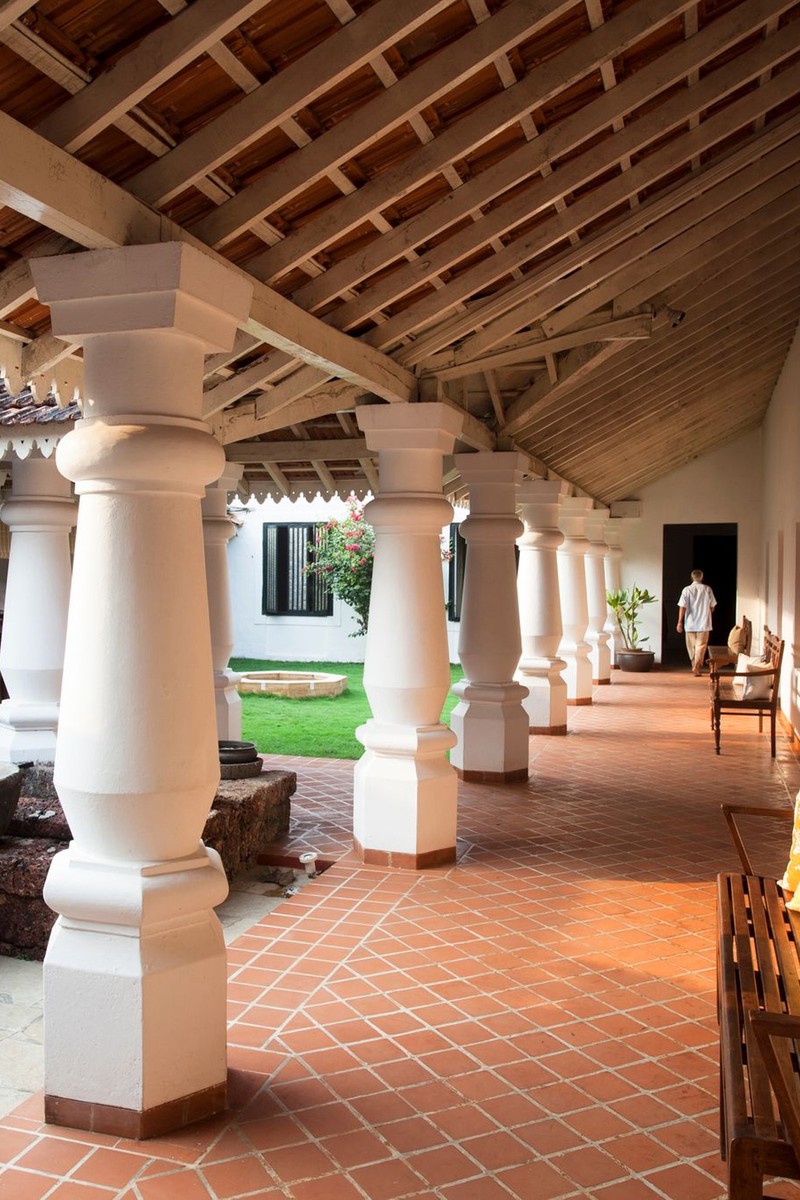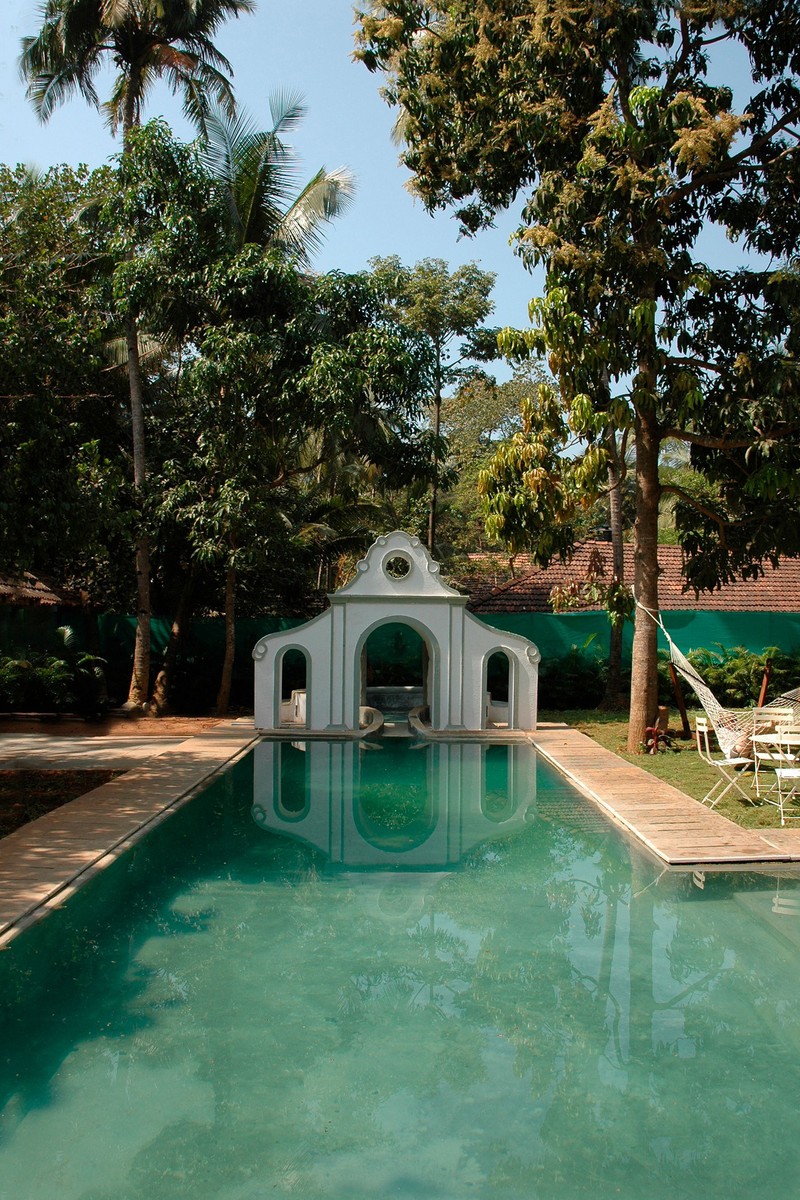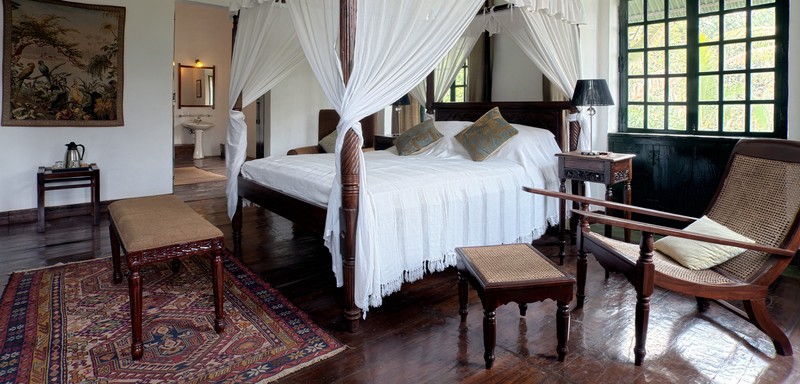
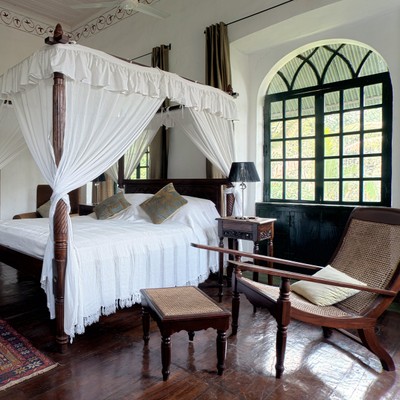
Why You Need To Book A Holiday To Goa
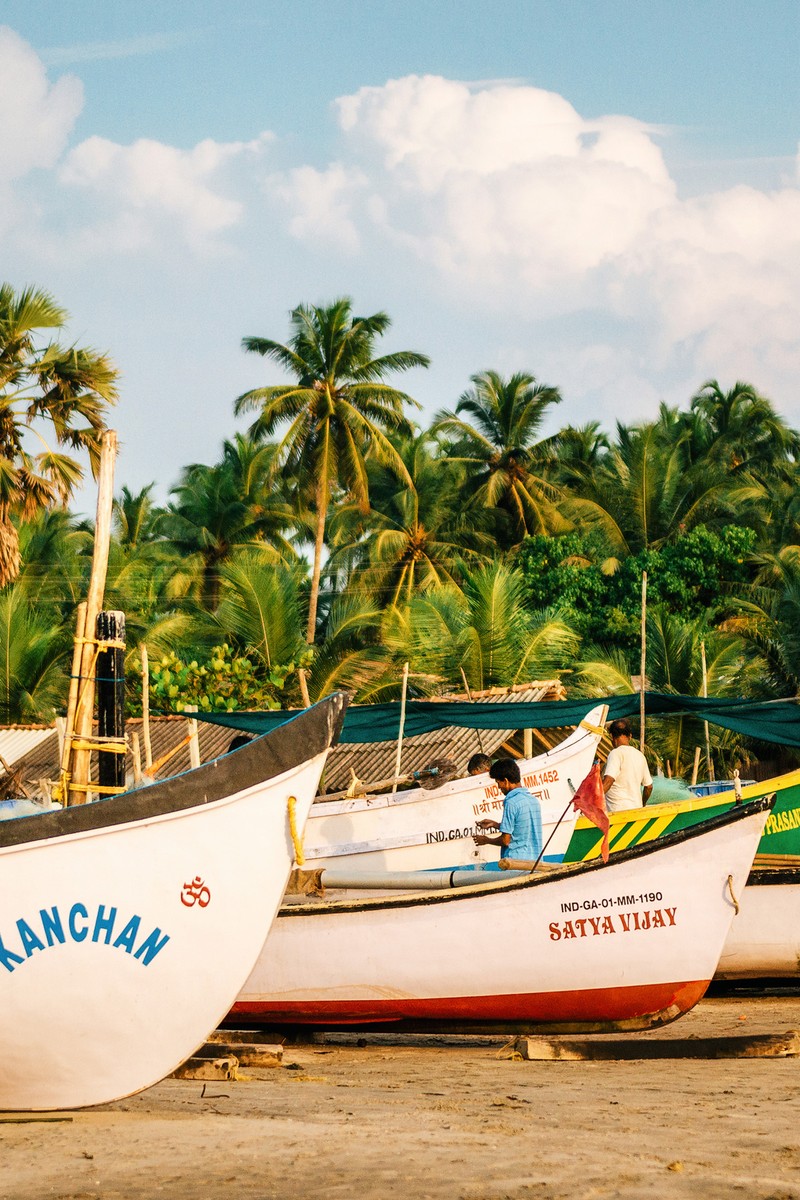
The tiny southern Indian state of Goa lies halfway down the country’s western coast overlooking the Arabian Sea. It has had a long relationship with the West; it was the first place in India to be colonised by the Portuguese in the early 16th century, an occupation that lasted over 450 years until 1961 when the Portuguese were ousted by India’s first prime minister, Nehru. The legacy they left behind can still be seen and felt – from the numerous whitewashed churches, stunning cathedrals, baroque architecture and grand mansions to the traditional catholic ceremonies and cuisine. It was during the 60s that the hippy culture started, as Goa and its miles of golden sandy beaches started to attract travellers in search of sun, sea and spirituality.
Today, Goa can be divided into three areas: the north (where the hippies first settled and still the place to party) is more developed; the south is more relaxed and peaceful; and in the centre is the Panaji peninsula with the capital Panjim and Old Goa. Wherever you go, the laid-back, friendly atmosphere is still very much there and the choice of places to stay is vast, including little B&Bs, cottages on the beach, Portuguese mansions, stylish boutique hotels and ultra-luxe resorts. As Tanya Dalton of Greaves India told us: “There’s a reason why Goa remains one of India’s most enduring tourist destinations – because there is a Goa for everyone. Whether you want to collapse at the end of a frenetic sightseeing tour for a couple of nights or fancy a two-week fly and flop in the sun, you can take your pick from one of the glitzy sprawling resorts of the south, like Taj Exotica and the newly renovated St Regis, or a hidden eco resort like Cabo Serai; or in the north, you’ll find lovingly restored old Portuguese manor houses, like the elegant Ahilya by the Sea or the beautiful private villa, Summertime, as well as several small beach hideaways and yoga retreats. The only problem is working out which Goa is for you. I have been travelling to Goa all my life and have never had the same experience twice; it’s an ever-evolving state that encapsulates the many colours of India, whilst retaining the Portuguese laissez-faire, laid back attitude to life.”
NORTH GOA
Sitting between the Mandovi and Terekhol rivers, North Goa’s golden sand beaches line the coastline and are backed by colourful makeshift beach shacks and coconut palms. Just inland, the villages come alive with local restaurants and bars. You’ll also find some of the best markets in the state, including the bohemian Anjuna Flea market, the Mapusa local produce market and the Saturday night market at Arpora.
Where To Stay
Situated just across the river from Panjim, near Coco Beach and only minutes from busy Canlangute and Candolim beaches, boutique hideaway Ahilya by the Sea is run by a husband-and-wife team. Spread across two Portuguese-style villas, each of the nine rooms has antique furniture and Goan artefacts and boasts lovely views of the sea. There are two pools, a spa and, should you want to stay in for dinner, guests eat together at one communal table in the gardens. The menu changes daily, dictated by the fishermen’s daily catch.
Perched on a hilltop above Calangute town and within an easy drive from North Goa’s beaches, Summertime is an ultra-luxe, fully staffed private villa that sleeps up to seven guests. Each of three en-suite bedrooms are bigger than most hotel rooms and decorated in vibrant colours with paintings by local artists. There is ample living space and days can be spent lazing by the infinity pool with views of the paddy fields and surrounded by a lush tropical garden. A chef is on hand to prepare home-style meals – and you only pay for the ingredients. Much of the fruit and vegetables comes from the house’s organic garden and the chef will shop on guests’ instructions, so it’s best to discuss menus with him.
Further up the coast, in between Morjim and Mandrem, sits Ashwem Beach, one of the most popular stretches of coastline in North Goa – and with good reason. The fine golden sand is pristine and there are a number of lovely boutique hotels to suit all budgets. Palm Grove is a small resort with 20 luxe bungalows and an excellent restaurant and bar for sundowners overlooking the beach. Each of the bungalows is built from soft concrete and bamboo with grass roofs; the rooms are decorated in muted, restful colours and have modern bathrooms. If you’re into yoga, book into Anahata Retreat – the 21 stylish cottages and bungalows are set within palm trees, and you can do a yoga class daily before breakfast; the Ayurvedic massages are a must too. It’s all about healthy living and eating here, though you can fall off the wagon and enjoy excellent cocktails too. For a budget-friendly stay on Ashwem, Leela Cottages is a great option. Accommodation is in rustic cottages spread across a lush coconut grove and it is right next door to popular restaurant La Plage (see below).
Heading north from Ashwem, near Mandrem village and in a remote corner, you’ll come to The Beach Houses, one of Goa’s best kept secrets if you’re after total peace and pure escapism. Approached via a bridge across a creek, the simple yet elegant beach accommodation is spread across old colonial houses that date back to the late 19th century. The brightly coloured Priest’s House (the most luxe) and Captain’s House each have three bedrooms with sea-facing terraces; the smaller Bakery sleeps two to four and opens on to the beach, and can be rented out as two individual rooms; and the Piggery is a two-bedroom house that can only be rented out in its entirety. Interiors are done up in a rustic palette of red, ochre and white, and the cobalt-blue bathrooms are eco-friendly and open to the sky. There are also three tents on the beach, if you want to sleep under the stars. Meals are served in the tented beach shack restaurant in the coconut grove behind the Captain's House – the menu features fresh seafood, as well as delicious Goan chicken curries and tandoor dishes. Nature lovers can spot a variety of birds, as well as river life including otters; and at certain times of the year, turtles come to hatch on the beach.
Away from the busy beaches and tourists, just outside the village of Siolim, the 300-year-old heritage boutique hotel Siolim House is full of old-world charm that will take you back to Portuguese Goa and is perfect for a romantic break. Like many colonial houses, it was left to ruin but has been meticulously restored and now has nine elegant and airy suites, all with beamed ceilings, antique wardrobes and muslin-draped four-poster beds, as well as modern en-suite bathrooms. We love the large first-floor Macao suite which has six tall garden-view windows. Meals are served in the inner courtyard and yoga classes are held every morning after which you can spend the day relaxing by the pool. If you want to have a day by the beach, you will need to hire a driver or taxi.
Where To Eat
Our favourite beach restaurants in North Goa are lovely at lunchtime (though most are open for dinner too), but it’s worth staying until late afternoon to enjoy a cocktail as the sun starts to set – the skies and colours are amazing. Pousada by the Beach in Calangute serves fabulous seafood-centric dishes in a rustic, laid-back beachfront setting. The service, overseen by the friendly owner and his son, is excellent. Select your freshly caught fish, which is then cooked in a tandoor oven, and order some side dishes to share; crusty prawns and prawn balchao are the star dishes. On Ashwem, we love The Pagan Café (also known as Babu Huts) for great cocktails, the restaurants at Palm Grove and Anahata (see above), and Gopal. French restaurant La Plage is somewhat smarter and pricier and attracts a chic clientele, but it’s worth a visit in the evening for a more sophisticated experience. Be sure to book in advance.
Away from the beaches, Bomras in Candolim serves Burmese food but draws on influences from the regional cuisines of China, Laos and Thailand, while making use of Goa’s fresh produce. So, you get the likes of red snapper with lime and chilli, pomfret with blackbean paste, seared beef with basil and coriander – all delicious and served in the open-air courtyard, a lovely setting with big overhanging trees. One of the most popular restaurants in Goa, Greek restaurant Thalassa in Siolim, is situated in a large, beautiful outdoor waterfront space with spectacular views, and is the place for multiple photo opps. As night falls, live gigs give this restaurant a great party atmosphere if you’re up for a fun evening out. The food is excellent, too, and souvlakis, lamb meatballs or a veggie moussaka make a nice change from Indian/Goan food. Again, bookings are essential for both.
Of late, the once sleepy village of Assagao has become one of Goa’s coolest areas and is home to some of the area’s best restaurants. It isn’t near any beaches, so most tourists don’t want to stay here, but it is within easy reach by taxi from any of the accommodation above for lunch or dinner, and definitely worth the trip. Gunpowder is probably the place that put Assagao on the foodie map. An old Portuguese villa with a lovely courtyard, the menu is predominantly South Indian from Kerala and Andhra Pradesh, with both veggie and non-veg recipes that have come from the owner’s family. If you’re dining in a large-ish group, order as many dishes as you can to share but don’t miss the Andhra prawn curry, spicy beef and fluffy appams (a type of Indian pancake). For fine dining, head to Suzie’s, a small and pretty restaurant located down a secluded lane. Founder/chef Suzie worked in a Japanese restaurant in Melbourne and has created her own style of fusion food using seasonal ingredients – the five-course menu changes every six weeks. It’s open for dinner only and booking is essential. Also set in a lovely Portuguese-style villa, Sublime has recently moved from its beach location in Morjim to Assagao. The food is fusion (Mexican, European, Goan) – think taco platters, vegan Bolognese, sea bass fillet with Goan sausage. Other restaurants to try include family-run Vinayak for their legendary fish thali, Avo’s Kitchen for authentic Goan cuisine and Kefi for Lebanese food.
SOUTH GOA
Bordered to the north by the Zuari river and to the south by the state of Karnataka, South Goa is much quieter. You’ll find more five-star, larger resort-style hotels than on the north coast, but the area is, nonetheless, very picturesque and the beaches have fewer activities, bars and restaurants. Colva and Benaulim are the popular beaches; crescent-shaped Palolem is great for swimming and kayaking; Agonda is family-friendly and you can go dolphin-spotting here.
Where To Stay
The latest luxury hotel (previously The Leela), which has just opened after a huge refurbishment, is the St Regis Goa Resort. Next to Cavelossim beach, the property is nestled in 49 acres of lush greenery and lagoons. Take your pick from lagoon view rooms, luxe suites with balconies and private villas – the latter come with two or three bedrooms, plunge pools, butler service and their own restaurant which has spectacular views of the 12-hole golf course. Another favourite luxe offering is the Taj Exotica Resort & Spa, which is set in large, landscaped gardens beside Benaulim beach. The design here is inspired by the area’s Goan and Portuguese heritage. Closer to the airport in Majorda, you’ll find the Alila Diwa Goa, a five-star Hyatt resort set amid lush paddy fields leading to the Arabian Sea. Designed to resemble traditional Goan style, with high column ceilings and tiled roofs, the hotel’s 153 rooms and suites are housed on two levels with views of either the fields, gardens or the infinity-edge pool.
If the big resort hotels aren’t for you, a great option is Cabo Serai which is situated high up a secluded hill, a stone’s throw from Cabo De Rama beach. This eco resort sprawls over 14 acres of lush native trees and has spectacular panoramic views of the ocean and surrounding areas. The seven spacious thatched cottages all face the ocean and feel very private, each with a balcony. We love the little in-room extras like the copper water pot, eco-conscious toiletries and the selection of teas and local coffees. For a budget-friendly option, but still with plenty of atmosphere, book into Vivanda Dos Palhacos, a lovingly-restored Hindu house, fronted by a beautiful Portuguese hacienda in the village of Majorda, and within an easy ten-minute stroll to the beach. It’s home to brother and sister Simon and Charlotte Hayward, who are the fourth generation of their family to be brought up in India. There are seven spacious en-suite rooms (and a tent during the dry season), all decorated with antiques, colonial furniture and original artworks. Meals are available but need to be pre-ordered.
Where To Eat
Compared to North Goa, there are fewer shacks and eateries on the beaches, and the best restaurants tend to be in the large resort hotels mentioned above. Two of our favourite beach restaurants, which should not be missed are Zeebop, on Utorda beach, where you’ll get lovely views of the beach and a laid-back vibe together with the freshest seafood, and Fisherman’s Wharf on the banks of the River Sal in the village of Cavelossim which also specialises in seafood and fusion food with Goan influences – book a riverside table and watch the fishermen come in with their catch of the day.
PANJIM AND OLD GOA
While most visitors want to stay on or near the beach, the capital Panjim should not be overlooked, even if it’s only for a day or two to visit the handsome, colourful Portuguese buildings and narrow lanes in Panjim’s Fontainhas Latin Quarter and Old Goa (or ‘Velha Goa’) which served as the capital of Portuguese India and is now a Unesco World Heritage Site. There are several options for guided walking tours which is the best way to learn about Goa’s fascinating history and ensure you see all the main sites. We recommend Luis Dias, a retired doctor, who grew up and lives in Fontainhas – he is very knowledgeable and knows every nook and cranny of Panjim like the back of his hand; he offers a variety of tours. Two shops worth visiting for throws, cushions, bedlinen and handcrafted textiles are Fab India and Tarini Goa.
Where To Stay
If you want to stay over in Panjim, book into the WelcomHeritage Panjim Inn which was one of the first big colonial mansions built in the heart of Fontainhas. The hotel is full of character and timeworn charm, and also has an in-house contemporary art gallery. The 23 individually furnished rooms feature antique canopied four-poster beds, carved rosewood wardrobes and period furniture. The verandah is a great place to stop for a coffee or drink. While there is an in-house restaurant, there are lots of good places nearby to explore.
Above Old Goa, far from the crowds and off the beaten track, but within an easy drive to main sites, The Postcard Velha is a modern colonial hideout tucked away in a private estate. The six luxe rooms have private balconies overlooking lush gardens and the valley beyond, some with views of the delta formed by the Mandovi and Zuari rivers in the distance.
Where To Eat
If you are shopping, The Black Sheep Bistro above Fab India (which is a little way out of the centre town – take a taxi) is a great place to unwind. It has an interesting menu of small dishes, as well as a great cocktail list, and is also open in the evenings. Opposite Fab India, Mum’s Kitchen serves authentic Goan dishes from both Hindu and Catholic homes, re-discovering the age-old recipes of a bygone era. Near Tarini Goa, the Panjim branch of Fisherman’s Wharf, set in an old palatial Portuguese heritage house, has an extensive menu of local dishes as well as pan-Asian food.
Closer to the centre of town the Mamagoto chain was India’s first pan Asian café when it opened in 2010. The menu in this smart restaurant is based on Asian street hawkers’ cuisine – think spring rolls, dim sum, and rice and noodle dishes. For excellent yakitori and Japanese street food, Makutsu is very popular but be sure to book, as it’s tiny. And for a very local experience, famed Viva Panjim is a family-fun restaurant housed in a heritage home and serves traditional Goan specialties and seafood – most of the recipes for vindaloo, balchao, Xacuti and curries have been handed down through generations of the family.
/https%3A%2F%2Fsheerluxe.com%2Fsites%2Fsheerluxe%2Ffiles%2Farticles%2F2023%2F01%2Fgoa-image-10-bought.jpg?itok=6GVCYDWp)
SUGGESTED ITINERARIES
Goa can be reached direct from some UK airports at peak times of the year (November to March); or you can fly into Mumbai and take a domestic flight. It’s a short one-hour hop but be sure to give yourself plenty of time in Mumbai to allow for any delays with your international flight and to get through immigration and customs – queues can be long and the process can take in excess of two hours. All the accommodation listed above can be booked direct or, for some of the smaller boutique hotels, visit iEscape for detailed reviews and booking information.
If you want to combine a sightseeing holiday in India with a flop on a Goan beach, and want all the hard work done for you, the following are some of our favourite tour operator options to suit a range of budgets:
Audley Travel – Mumbai & Goa. Experience the contrast between bustling Mumbai and the palm-fringed beaches in Goa.
Greaves India – Diamonds & Dynasties of Southern India. This tour takes in Hyderabad, Gulbarga, Bijapur, Badami, Hampi, Goa and Mumbai.
Ampersand Travel – Deccan Discovery... Archaeology, Ancient Temples & Train Journeys in South India. An ultra-luxe cultural tour that takes in Kerala, the Rajiv Gandhi National Park at Kabini, Hampi, Mysore, Bangalore and Goa, and combines stays in hotels together with the Golden Chariot train.
Hays Travel – India’s Golden Triangle & Goa takes in Delhi, Agra, Jaipur and Goa.
Newmarket Holidays – Tigers & the Taj Mahal with four-night Goa extension. Explore Delhi, Agra and Jaipur, spend two nights in Ranthambhore National Park and extend your holiday to visit Goa.
WHEN TO GO
The end of October to March is the best time to visit Goa. In November, beaches are empty, the sea is calm but many of the smaller hotels, beach shacks and restaurants are not yet up and running for the new season. The peak season is from mid-December to the end of January; Christmas and New Year get very busy and accommodation rates get hiked up, and many places are booked a year in advance. The monsoon season lasts from April to September – April and May are very hot and humid and in June and July it rains heavily. August and September are cooler and can be lovely, but you will get short, heavy showers followed by sunshine. Our advice: book accommodation now if you want to travel over Christmas and New Year in 2023.
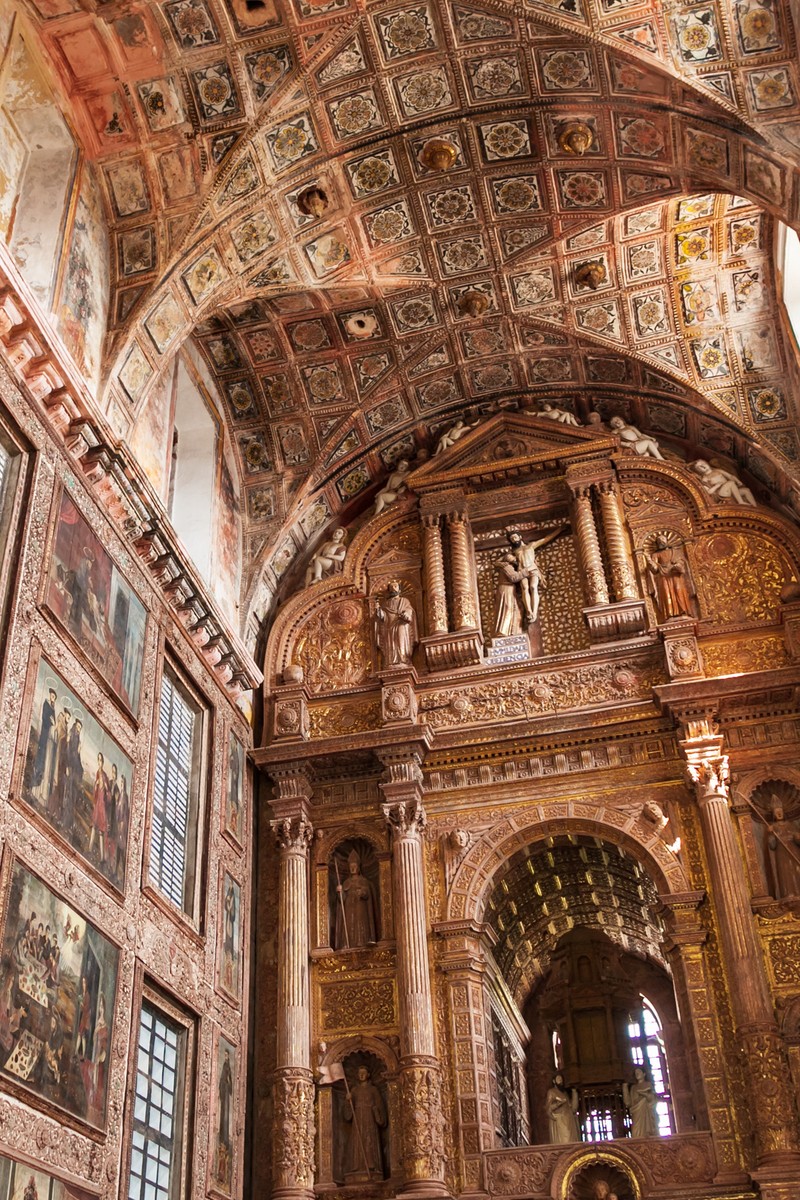
DISCLAIMER: We endeavour to always credit the correct original source of every image we use. If you think a credit may be incorrect, please contact us at info@sheerluxe.com.
/https%3A%2F%2Fsheerluxe.com%2Fsites%2Fsheerluxe%2Ffiles%2Farticles%2F2023%2F01%2Fgoa-image-2.jpg?itok=10uEll4r)


/https%3A%2F%2Fsheerluxe.com%2Fsites%2Fsheerluxe%2Ffiles%2Farticles%2F2023%2F01%2Fgoa-image-6.jpg?itok=2trX5IGO)
